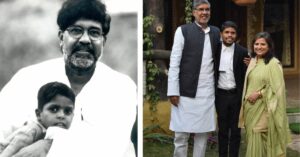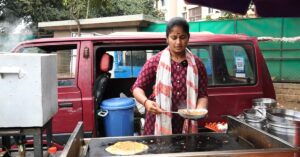MY STORY: I Met the Man Who Brought Social Inclusiveness to a Forgotten Village in Uttarakhand
Priya Krishnan Das recently visited Kalap, a small gram panchayat located 200 km from Dehradun in the Tons river valley. She was amazed to see how a once-forgotten village has been magically transformed – all thanks to Anand Sankar and Kalap Trust.
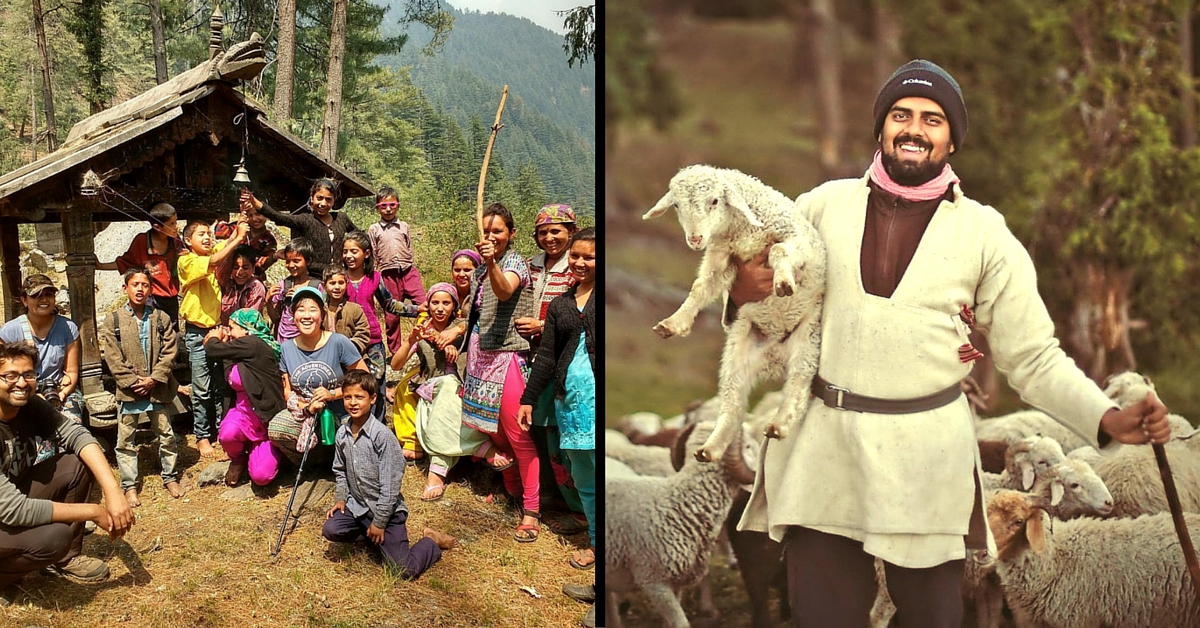
Priya Krishnan Das recently visited Kalap, a small gram panchayat located 200 km from Dehradun in the Tons river valley. She was amazed to see how a once-forgotten village has been magically transformed – all thanks to Anand Sankar and Kalap Trust.
It was around three years ago that I first stumbled upon the website of Kalap. The home page said, ‘Untouched Garhwal’, and I knew that I had to visit this place. That wish came true in June this year when I got an opportunity to be part of a trekking group for the Nomad’s trail led by Anand Sankar, the founder of the Kalap Trust – the man who brought social inclusiveness to the otherwise forgotten village and its people. For the uninitiated, Kalap is a small gram panchayat with a population of around 500 people, located 200 km from Dehradun in the Tons river valley. The nearest road is an 11 km trek away, in Netwar. It takes around five hours of trekking in winters and about eight hours in summers to reach Kalap from Netwar. Lack of connectivity meant that the village lacked electricity, education and basic medical facilities until 2013, when Anand Sankar decided to adopt it and change the lives of the people for the better.
Visiting Kalap is like stepping back in time – with traditional wooden houses, cattle and sheep in every household, and smoke curling up above the roof tops. I asked Anand how he chose Kalap, a village far away from Bengaluru where he then lived.
The former photo-journalist said that he had first visited the village in 2008. The untouched beauty of the place and the simple people struck a chord with him. He ended up making subsequent visits and eventually fell in love with everything there.
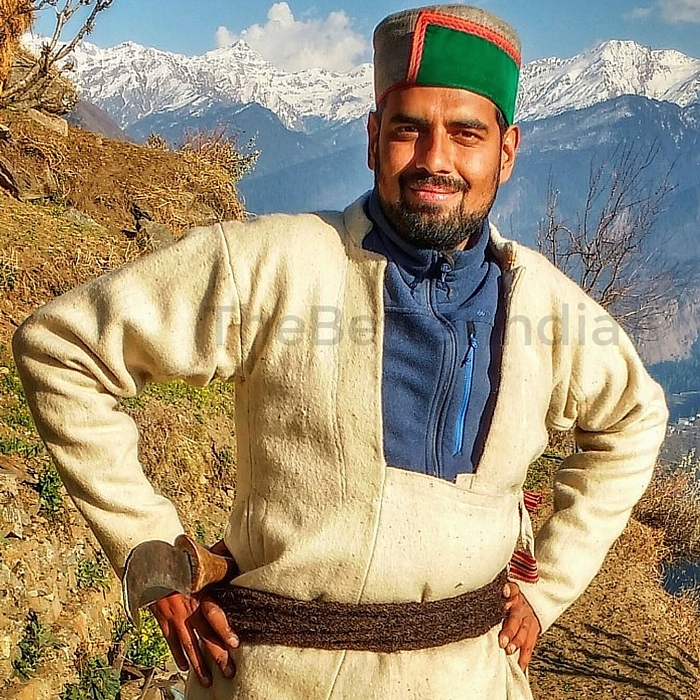
But the more he visited Kalap, the more he realized how socially isolated the village was. On one of his trips he met an old woman burning with high fever. He gave her a paracetamol and when the fever came down, she literally fell at his feet. He then got to know that no doctor had ever visited Kalap, realizing that the many things we take for granted in the cities, are hard to come by in Kalap. He arranged for visiting doctors and set up the first ever health camp in Kalap in 2014. It was disturbing to know that many villagers were diagnosed with tuberculosis during the health camp.
That’s when Anand decided to do something more long term to improve the lives of people there. He set up the Kalap Trust in September 2014. And a lot has changed for the good since then. A free clinic has been set up to deal with two chronic health issues affecting most people there– tuberculosis and nutritional disorders. The clinic’s focus is on the vulnerable population – children, pregnant women and the elderly.
A doctor, Dr. Nandana Acharjee, MBBS, has been appointed full time on a salary by the Trust. She has also trained two local women as her assistants who help her run the clinic.
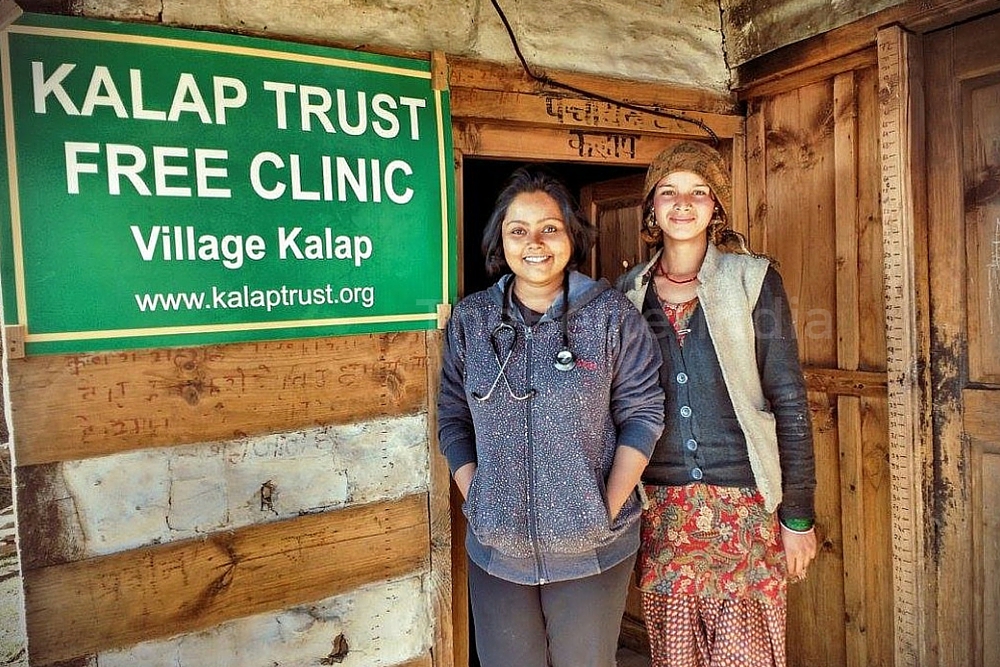
The clinic provides out-patient services, antenatal care for pregnant women, paediatric treatment, emergency care for minor fractures, burn, wounds, etc. and preventive measures like spreading awareness about hygiene, cleanliness, nutrition, etc.
All the people of the village have been direct beneficiaries of the clinic till date. The doctor also travels once a month to the nearby villages to conduct checkups and health camps.
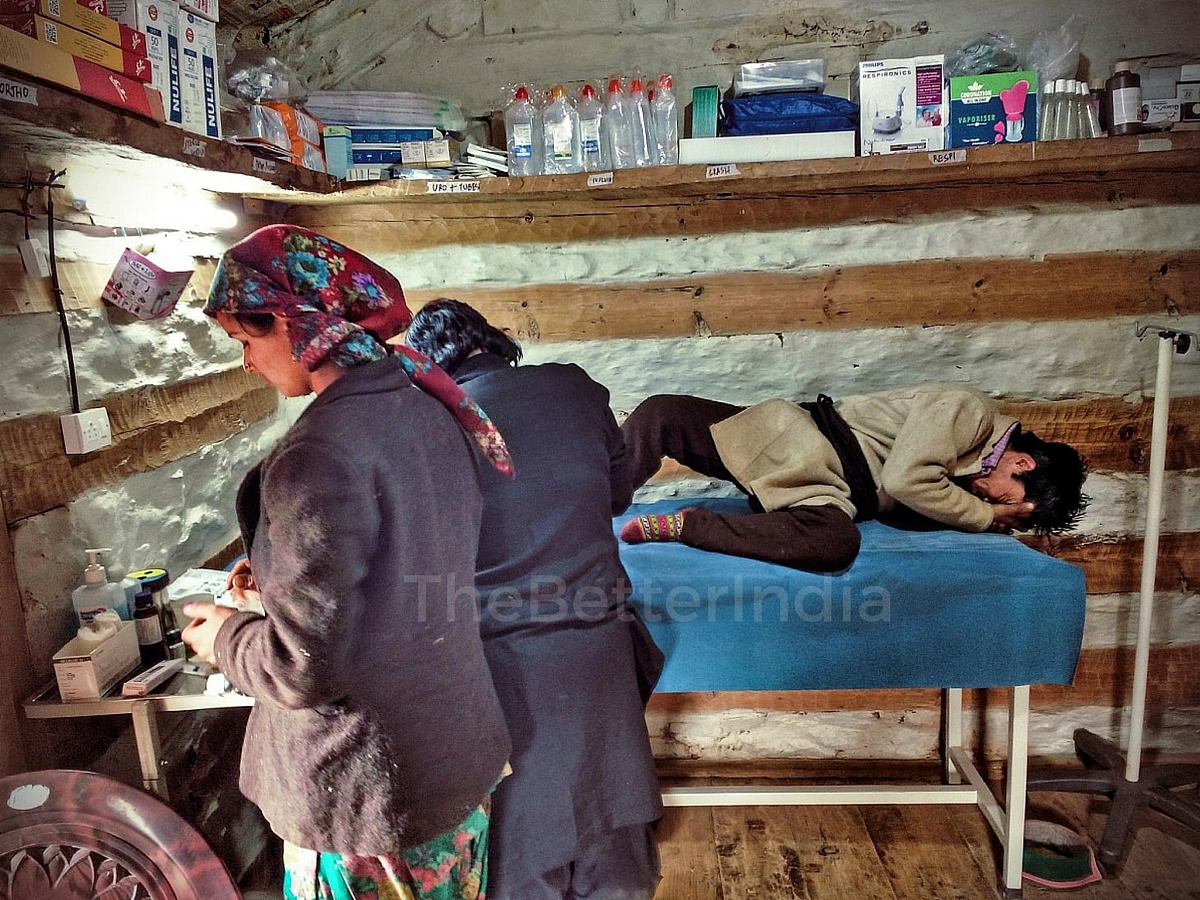
The Trust has installed specialized equipment at the clinic, in addition to basic clinical equipment like ECG machine, pulse oximeter, nebulizer, tractions, oxygen cylinder, IV stands, braces/stabilizers/cane, hospital bed (manual), etc. They are also in the process of setting up a basic laboratory that will offer bloodwork and tests for STDs. The Trust dispenses medicines free of cost, which has been a boon to the villagers, since monetary transactions are minimal in Kalap where the barter system is still prevalent.
The second most important project taken up by the Kalap Trust is education. The only barely running government school there was the one that continues to be in an appalling condition today. The teachers wouldn’t turn up to teach and children would refuse to have the awful mid-day meals.
To compensate for that, the Trust has set up a Montessori-cum-primary ‘after school’ in the village.
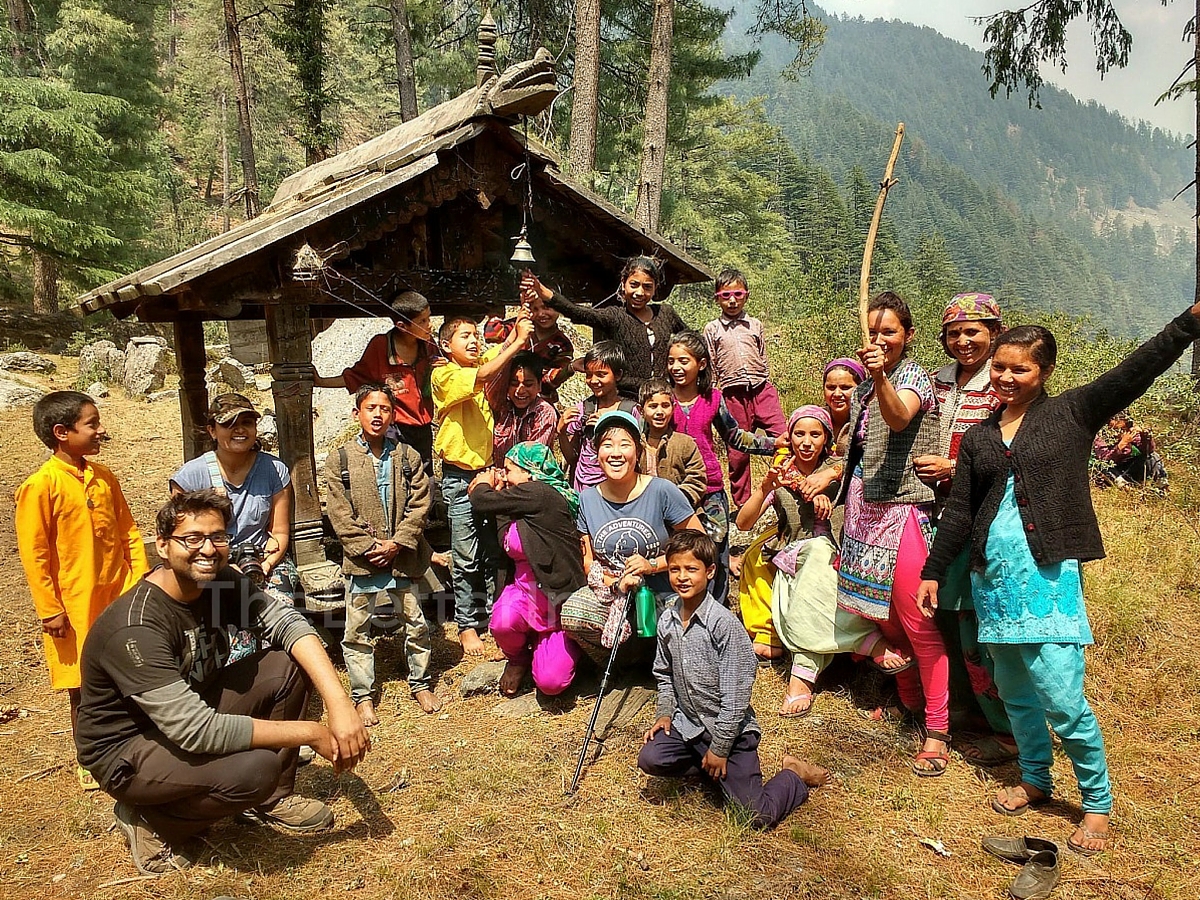
The purpose of this initiative is to assess the gaps in government education system and fill them. The school runs every day after regular school hours and full-time on holidays and during vacations. One of the most important things it imparts is English language training, which prepares the children to adjust easily to an English medium school later in their academic life. Another emphasis is on nature interpretation, outdoor experiential education, basic science and math education.
I got an opportunity to attend and observe some sessions led by the teacher Ashwini Govind. With a diploma in Experiential Education, Ashwini said her earlier experience was in teaching city children to connect with nature. But here, teaching children who were born and brought up so close to nature was a totally different ball game.
Through puppetry, songs, stories and elements of nature, Ashiwni does an excellent job of teaching children about the importance of environment conservation, and other social and life skills.
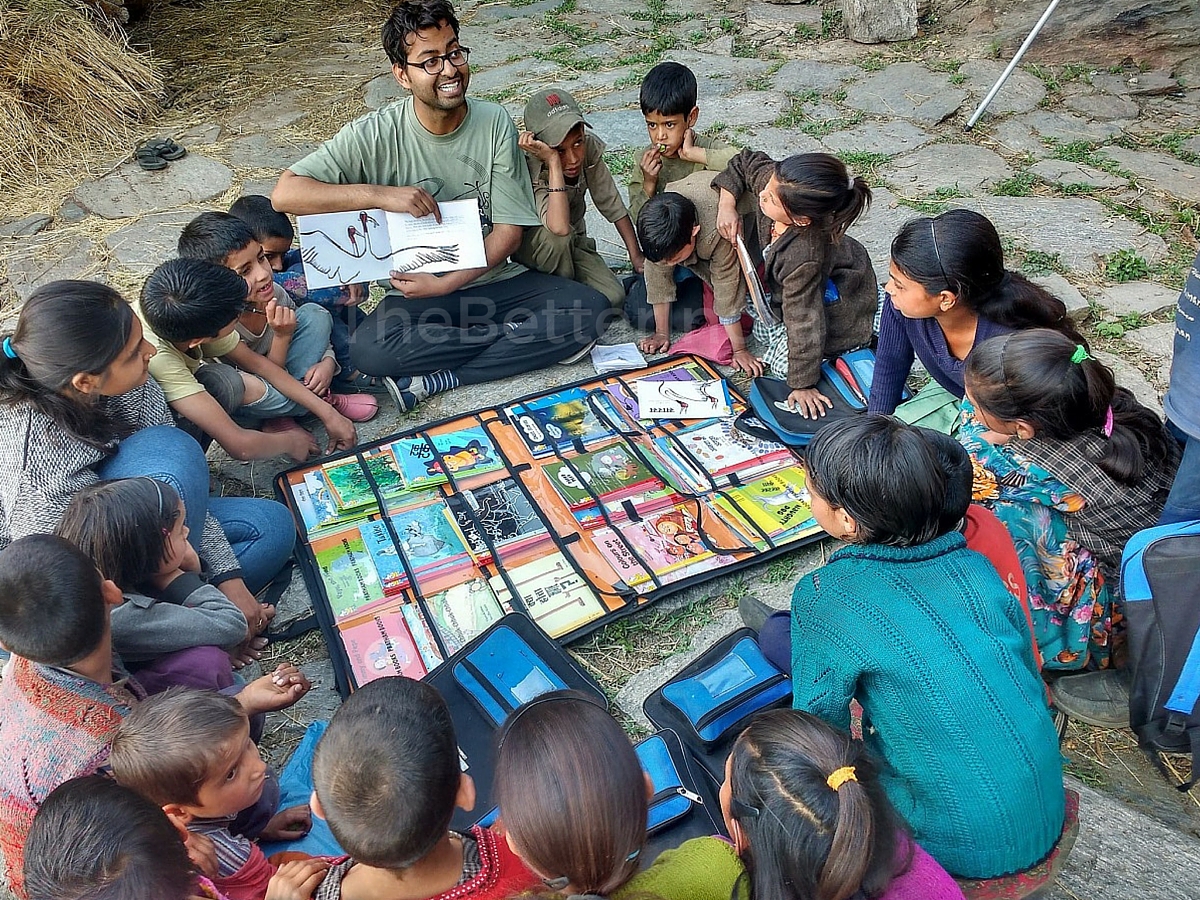
All the 90 children of village who are of school-going age are enrolled in the school. There are currently two full-time salaried teachers working on this.
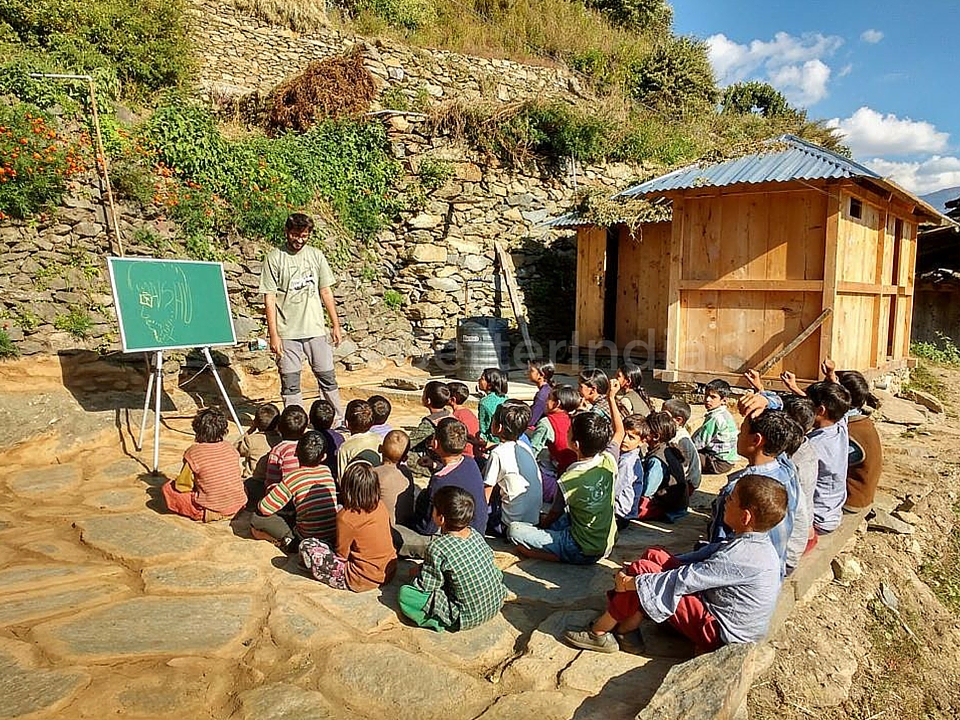
The children are split up into different learning groups after an assessment process. The classes for the different groups happens in batches every alternate day and the teachers also visit and work with children in the isolated settlement of Unani in the Kalap gram-panchayat.
There are English classes for adults in the late evening.
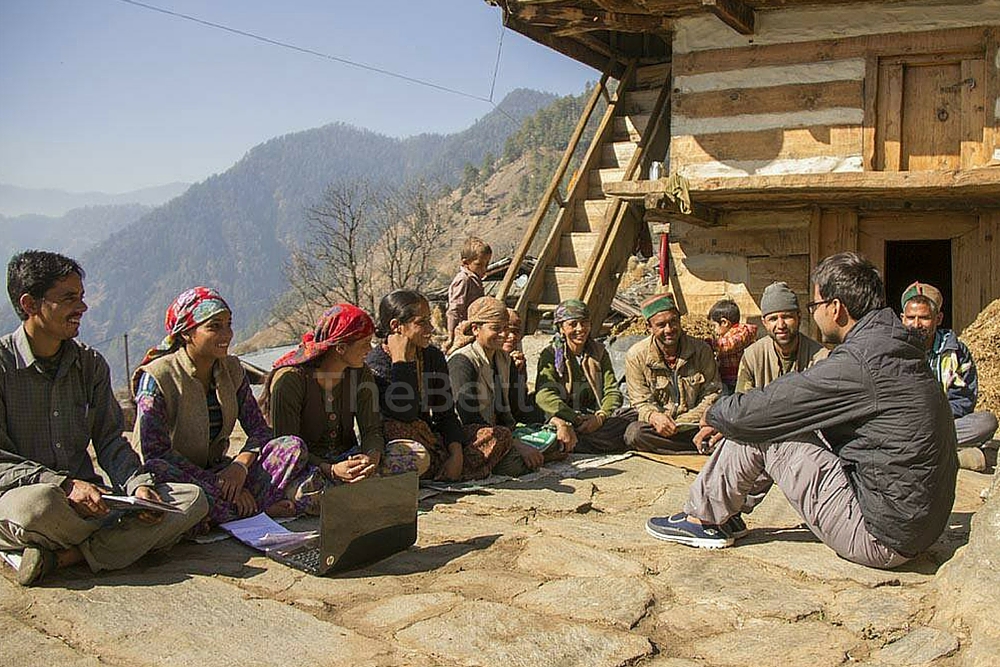
Some of the youth from the village have been appointed as assistants to the teachers. The school, like the clinic, is entirely crowdfunded! The annual cost of running the school is around Rs. 18,00,000 which comes to Rs. 20,000 per student. The Trust accepts sponsorships for students. To know more about how to sponsor the school, you can send an email to [email protected].
The lack of electrification in Kalap is a serious infrastructure challenge. Though the village is connected to the power grid, the power line is too weak to serve the community’s needs. For months together, the line remains non-functional due the terrain and harsh weather conditions. To solve this energy crisis, Kalap Trust has partnered with M/s E-Hands Energy Private Limited with a long term MoU to deploy a renewable energy mini-grid for the village.
Since the village’s geographical orientation is south-facing, it is greatly conducive for solar projects because it enjoys the maximum amount of sunlight time at any given time in the year. Added to this is its location at the height of 7,800 feet above sea level, where sunlight is strong with few days of total cloud cover. The solar grid project is structured in the form of a Village Electricity Company (VEC) called ‘M/s Kalap Solar Power’, which is entirely owned and run by two local youth from the village. The villagers pay for the electricity consumed. A long tenure soft loan was taken to finance the mini-grid and the loan is repaid from the monthly payments collected from the homes that avail of this service.
Currently, 23 homes have been electrified since June 30, 2105 by ‘M/s Kalap Solar Power’ which operates a 1 kW grid.

There are three 8W tube lights provided in each home and one mobile charging station. The consumers currently pay a fixed rate of Rs. 200 per month for the electricity consumed. Additionally, there is enough surplus power being generated by the solar panels during the day to provide electricity to a school and clinic run by the Trust. The children are able to do their school homework and people are able to finish their household chores comfortably at night. Charging of mobile phones has enabled access to information from across the world thus ending the social isolation of the village. As travellers it was a relief to charge our phones and camera batteries in the home-stay.
Being nestled in the Garhwal Himalayas, Kalap has many trekking and hiking routes offering splendid views of the mountains. These routes pass through quaint villages, virgin forests, gurgling mountain streams and alpine meadows. Anand has started a community tourism programme, which generates gainful employment for the local people. Local men and women have been trained as mountain guides and perform other activities on a campsite like cooking, taking care of guests, etc. Rooms in village homes are used as homestays. This project began in June 2013 and has been running successfully. Visitors get to experience the local culture, interact with the village people, sample local cuisine and explore the beautiful surroundings.
There are itineraries designed to suit different people:
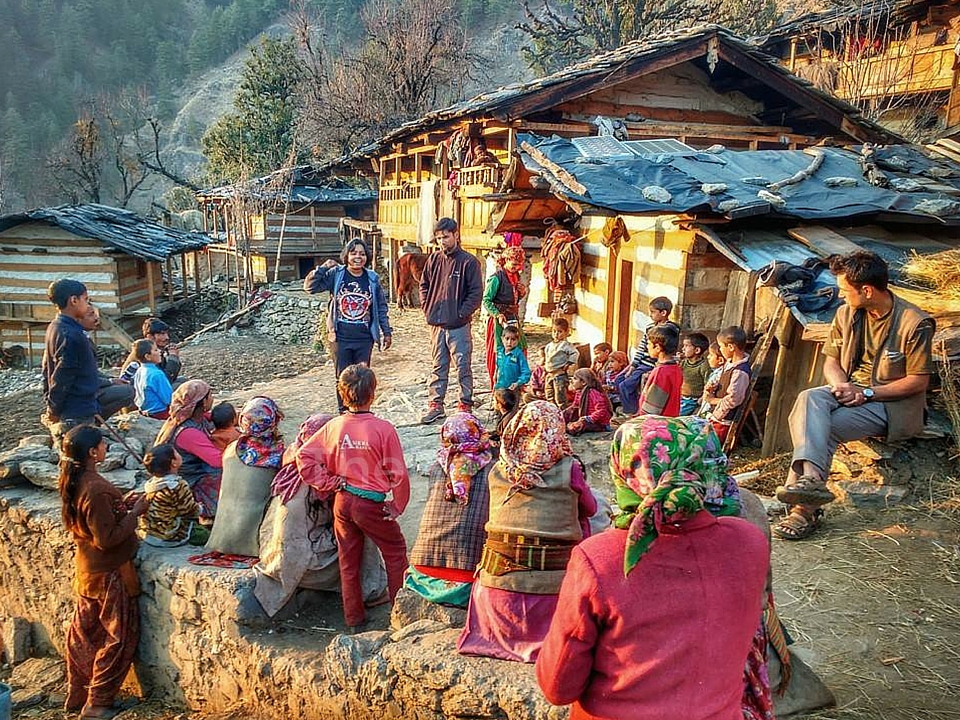
• Kalap Experience (4 Nights) – This is available all year round and visitors get a taste of village life including local food, folklore interpretation, cultural performances, and day treks in the area.
• The Four Village Trail (5 Nights) – Also possible throughout the year, this trail provides a typical village experience with trekking and overnight camping. One gets to visit potato fields, millet patches, and pastures.
• The Nomad Trail (7 Nights) – This is Kalap’s signature trail and the one that I went for. The trail follows the path of the Nomadic shepherds who move from one pasture to another for their sheep and goats to graze on. This is a moderate level trek and is conducted from April 15 to November 15.
• Barad Sar (9 Nights) – This is for adventure enthusiasts who will get to trek to the high-altitude glacial lake Barad Sar. The lake is located more than 14,000 feet above sea level and is the most sacred spot in the Tons Valley. Lord Vishnu is believed to have emerged from its depths in one of his many incarnations. This trek is offered from September 15 to October 30 every year.
Another important project taken up by Anand is to spread awareness about the importance of sanitation. The village people perform their morning ablutions out in the open just outside the village. Not only does that spread diseases but also ruins the beauty of the place. He has been encouraging people to construct toilets. In 2013, there were just two toilets in the village of 100 homes. Today, there are 25 toilets.
All the projects of the Trust have been running on donations and contributions from people. The lives of people in Kalap have surely improved.
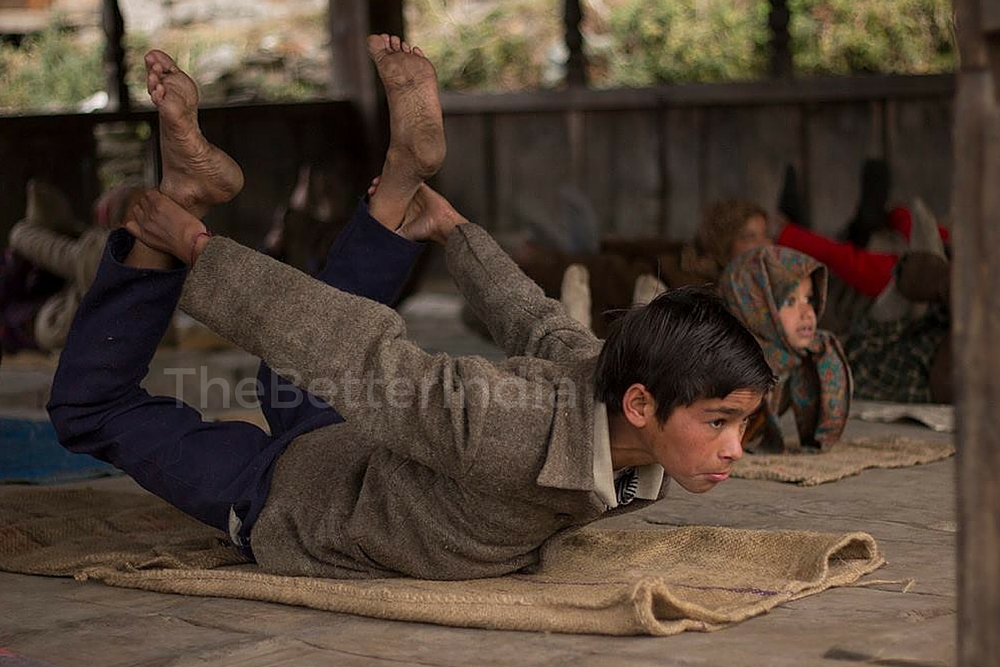
They now have access to a resident doctor, meaningful education for their children, and a sense of social inclusion which was earlier lacking. Anand is working on expanding the scope of the Trust beyond Kalap, to the nearby villages nearby that are as socially isolated as Kalap earlier was. His vision is to enable access to essential services like education, electricity and medical facilities and create livelihood options for the people of the Tons river valley.
To know more about Kalap and the work of the Kalap Trust, visit www.kalap.in and www.kalaptrust.org
– Priya Krishnan Das
Like this story? Have something to share? Email: [email protected], or join us on Facebook and Twitter (@thebetterindia). To get positive news on WhatsApp, just send ‘Start’ to 090 2900 3600 via WhatsApp.
This story made me
-
97
-
121
-
89
-
167
Tell Us More
We bring stories straight from the heart of India, to inspire millions and create a wave of impact. Our positive movement is growing bigger everyday, and we would love for you to join it.
Please contribute whatever you can, every little penny helps our team in bringing you more stories that support dreams and spread hope.







